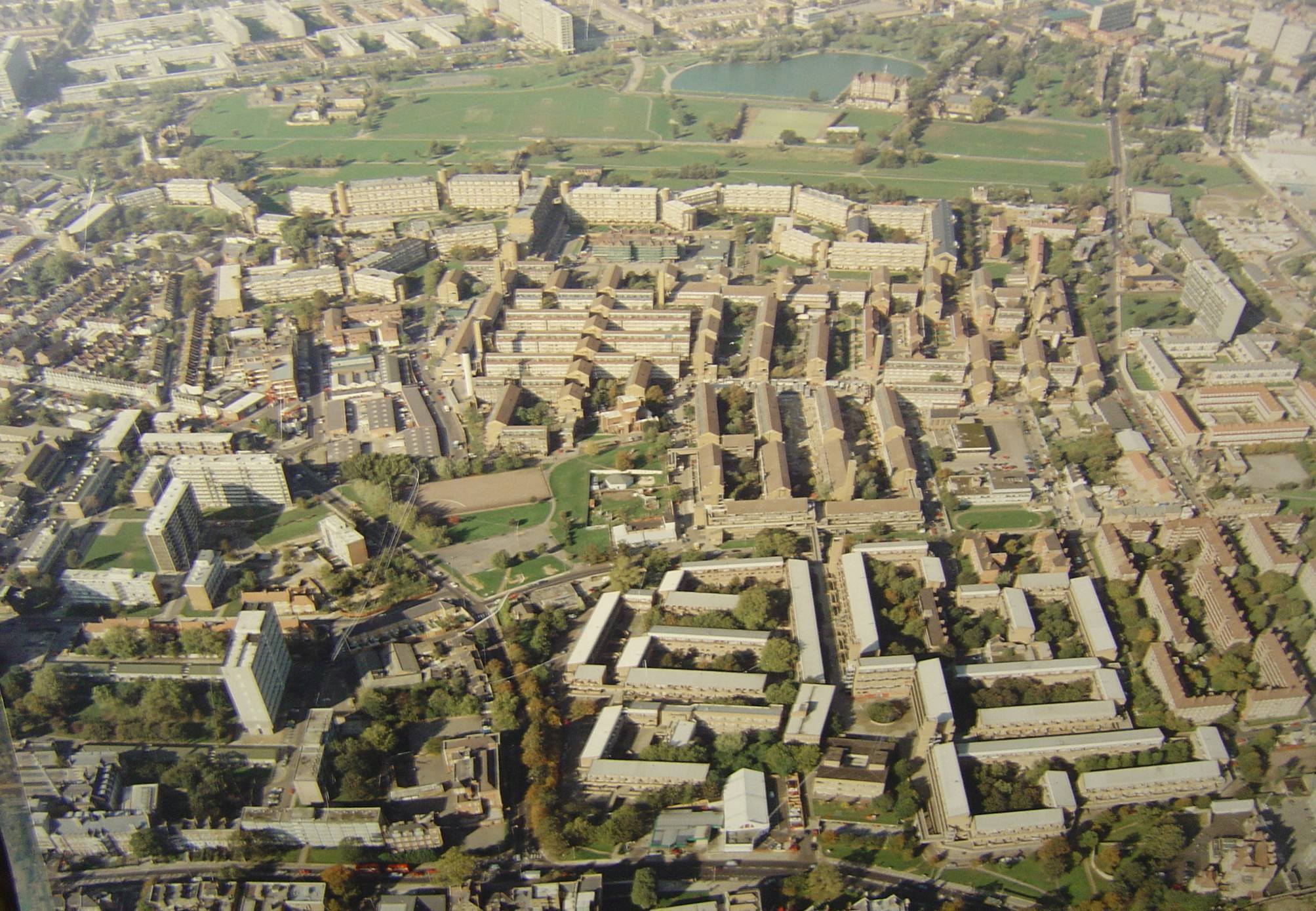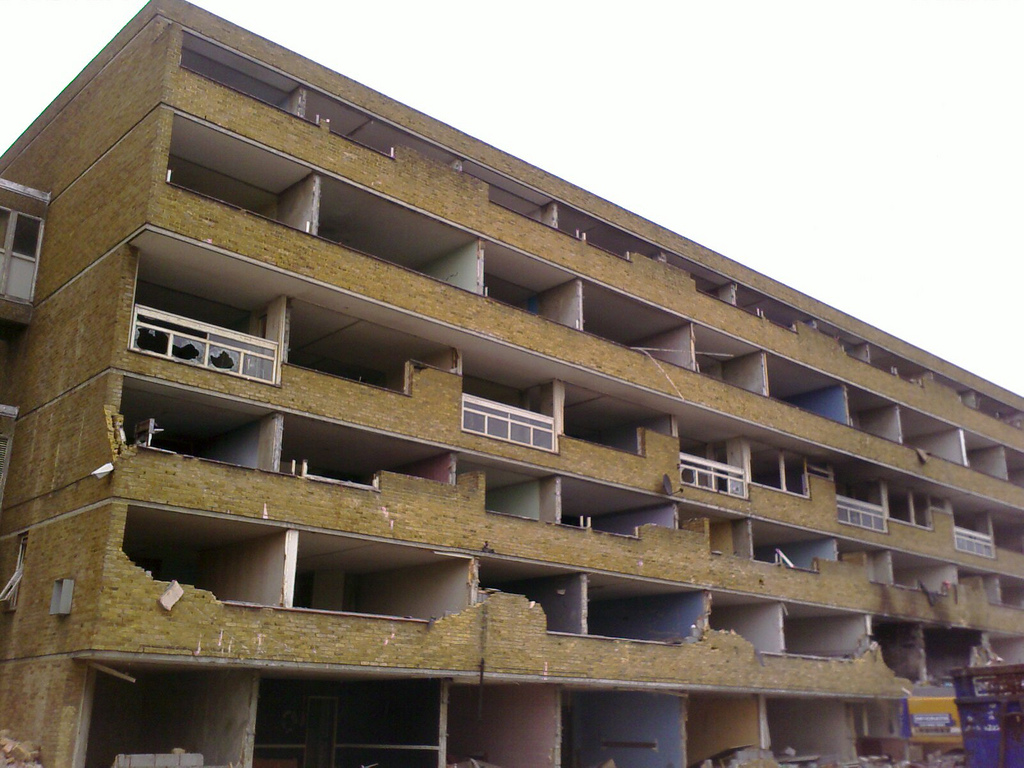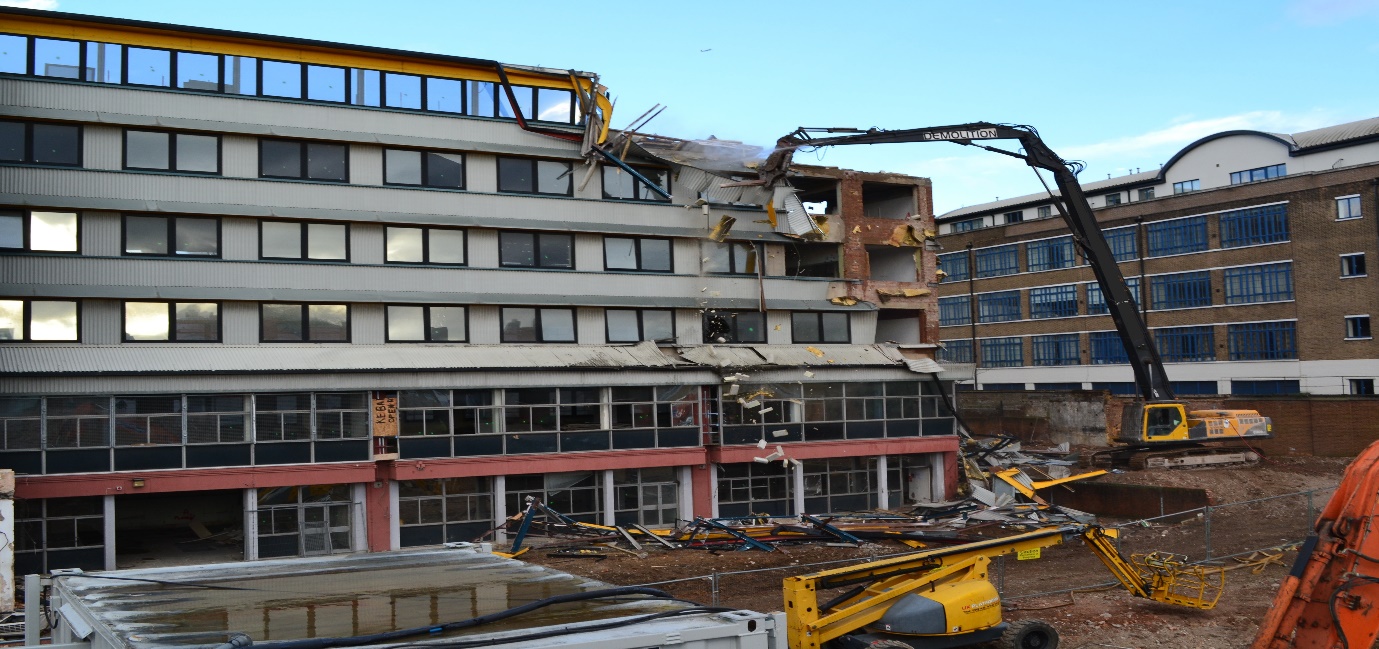Southwark's great estates
06/1997
20 years of gentrification

In June 1997, Tony Blair chose the Aylesbury estate to launch the Labour government’s urban regeneration plans, where he describes “an underclass of people cut off from society’s mainstream without any sense of shared purpose.”
“Behind the statistics lie households where three generations have never had a job…There are estates where the biggest employer is the drugs industry, where all that is left of the high hopes of the post-war planners is derelict concrete.”
His government sets out its plan for “dealing with the legacy of large single tenure council estates” in a report which advocates “diversifying tenure, income and ownership of large social housing areas” in order to “break the pattern of ghettoisation” and proposing to “use regeneration projects to attract ‘urban pioneers’ back into city centres.”
Fred Manson, Southwark’s Director of Regeneration and a member of the government working group that advised on the report, sets out the council’s own regeneration strategy: “We need to have a wider range of people living in the borough” because “social housing generates people on low incomes coming in and that generates poor school performances, middle-class people stay away.” He explains that “the policy is aimed at reversing some of the problems caused by past social engineering.”
01/1998
North Peckham regeneration

North Peckham regeneration was Southwark’s first regeneration scheme and was initially put together in the mid 1990’s, for the purposes of securing redevelopment funds from the government’s Single Regeneration Budget (SRB). It entailed the complete demolition of the 40-acre North Peckham estate of 1,444 council homes and included four adjacent estates, the Sumner, Willowbrook and Gloucester Grove and Camden estates.
According to the Greater London Authority (GLA), the scheme entailed the demolition of 3203 homes; 2019 were re-provided, including housing association and owner-occupied homes (‘for a more balanced tenure mix’) with a net loss of 1184 dwellings, all originally council homes.
02/1998
Willowbrook estate

Tonbridge House, the main block on the Willowbrook estate, containing 112 council homes demolished as part of the Five Estates regeneration of North Peckham. A series of four storey maisionettes remain.
12/2000
Sumner estate

The Sumner estate is demolished as part of the Five Estates North Peckham regeneration. It was built partly in the interwar period (13 blocks, 535 dwellings) and partly in the early 1950s (nine blocks, 247 dwellings) - a total of 782 dwellings over 22 blocks, from four to six storeys high.
The Sumner was the oldest of the Five Estates and of a type familiar across London - low rise, red brick and built in a traditional architectural style by the London County Council.
Source: http://research.gold.ac.uk/8715/1/ANT_thesis_GlucksbergL_2013.pdf
06/2001
Camden estate

All 874 council homes of the Camden estate are demolished as part of the Five Estates North Peckham regeneration.
07/2002
Gloucester Grove estate

Gloucester Grove estate is part demolished, part refurbished. It consisted of 1,210 flats and maisonettes distributed in 29 blocks, from three to ten storeys high; three blocks have been retained and refurbished.
Gloucester Grove fronts Burgess Park. According to Municipal Dreams, of the Five Estates it is ‘the most striking architecturally, notable for its long, linked, snake-like construction… between three and eight storeys in height joined by high, semi-circular, glass-tiled entrances containing stairways and lifts which provide a deliberately and eye-catchingly ‘modernist’ look..’.
01/2003
Bermondsey Spa regeneration

This scheme comprises 15 council-owned sites across a 50-acre area, delivered in conjunction with developer Linden Homes, Hyde housing association and Notting Hill Genesis housing association. 147 council homes have been demolished and of the 1,553 new homes constructed, 491 are approved as social rent. It has been shown that at least two phases of the scheme have been delivered as affordable rent instead of social rent - i.e. up to 80% market rent.
The scheme also involved demolition of several council buildings including offices that employed 640 Health & Social Care staff (Mabel Goldwin House) and a further 300 staff based at the council’s Spa Road complex. Gibson House was also demolished, which ran an externalised residential service for adults with learning disabilities and a day care facility for older people with mental health problems.

01/2004
Silwood estate

Decant starts on 95 council homes, Silwood Estate, Rotherhithe. This was phases 4a & 4b (comprising Gillam House, 11-33 Debnams Rd and a council depot) of a joint regeneration with Lewisham Council. The site is handed to Notting Hill Genesis housing association, which has built 182 new homes of which 55 were approved as social rent. It has been shown that these ‘social rented’ homes have been delivered as affordable rent - i.e. up to 80% market rent.
The Silwood regeneration started in 2000 with SRB funding. Despite the public money Site 4b was designated as a ‘private housing development’ with a 35% affordable housing requirement, reflecting ‘the high concentration of social housing in the area’ and the introduction of private housing to promote ‘mixed and sustainable communities’.
03/2006
Coopers road estate

Demolition starts on Coopers Road estate, Old Kent Rd. It comprised 196 council homes in five blocks - two 15-storey tower blocks (Yeoman Court & Marchant Court) and three lower level maisonette blocks. The final phase of the four-phase development was completed in 2015.
The estate’s land was sold by Southwark to Countryside Properties and Peabody housing association for a total of £4.09m. They built 247 new homes of which 107 were approved as social rent. However, data from the Greater London Authority (GLA) shows that have instead been delivered as affordable rent - i.e. up to 80% market rent.
01/2008
Elmington estate

Demolition of 519 homes on the Elmington estate begins. The Elmington estate was part of the Southwark Estates Initiative. The estate was made up of 4 towers and 14 low-rise maisonette blocks. Although found to be structurally sound the estate was earmarked for redevelopment, including demolition, as part of a government-backed estate renewal strategy, which sought to create more ‘mixed communities’.
The first phase of redevelopment, completed in 2006, was managed by Southwark council directly and saw the construction of 136 new council homes. Phase 2 was completed in 2015, by Notting Hill housing assoction, which built 279 new homes of which 63 at affordable rent of up to 80% market rent. The final Phase 3, to be completed 2019, delivered by Bellway homes, is providing 144 new homes of which 57 at affordable rent of up to 65% market rent.
In summary 519 council homes demolished on the Elmington estate, with 136 replacement council homes (with another 120 homes at social/affordable rent) - a net loss of 383 council homes.
01/2009
Acorn estate

The Wood dene blocks of the Acorn estate comprising 323 homes are demolished. The site is sold to Notting Hill Genesis housing association, which has built 333 new homes of which 54 were approved as social rent. As with Notting Hill’s other schemes, we have shown that were instead delivered as affordable rent - i.e. up to 80% market rent.
01/2013
Heygate estate

Demolition starts on the Heygate estate’s 1,212 council homes. Council leader Peter John describes the Heygate and Aylesbury estates as “symbols of inner-city neglect, with crime, antisocial behaviour, health inequalities and unemployment the only things that flourished there”.
The replacement development, Elephant Park (along with Trafalgar Place) will have just 100 social rented homes out of a anticipated total of 2,924 new homes.
The estate was fully decanted of residents by the beginning of 2008. Council tenants were promised a “Right to Return”, but the lack of social housing on the new development and the passage of time rendered this largely useless. The 180 or so leaseholders had to depend on inadequate compensation to buy their new homes and many moved out of London.
In 2017 an investigation of the London housing market by Transparency International - ‘Faulty Towers’ - found that ‘off-plan’ sales of new homes, before they were built, was ‘dominated’ by overseas investors.
01/2019
Aylesbury estate

Demolition continues of the 2,758 council homes on Southwark’s largest estate - the Aylesbury. The estate has been sold to two housing associations (L&Q and Notting Hill Genesis). A total of beween 2,900 and nearly 4,000 new homes is planned, with a minimum of 935 ‘social rented’, up to a maximum of 1,323.
In 2014 Southwark’s in-house architect said that in her Public Inquiry evidence, “the condition of the buildings does not, itself, present a case for demolition and redevelopment” but that the “fundamental issue is the estate layout and the poor urban environment this presents”.
She claimed that “the scale and orthogonal formation of the blocks does not correspond to human scale, nor does it create opportunities for neighbourliness and local neighbourhood identity” and is elsewhere quoted as saying:“We’re determined to break down the estate concept.”
In 2016, the demolition was temporarily halted as the government blocked the council’s compulsory purchase order on the grounds that leaseholders’ human rights were being breached. A further CPO was sought and granted in 2018.
09/2019
Housing stock decline
Since 1999, the borough has lost more than 13,000 council homes (see graph below) and the proportion of council housing had fallen from 60% of to 28% of housing stock by 2015. This is largely the consequence of Right to Buy and void sales, but council estate regeneration is clearly playing its part.
The 11 estates shown represent a total of 8,453 council homes and leasehold properties lost. The developments replacing these will provide over 11,000 new homes, but only 3,200 of them will be social rented and while Southwark does now have an council house building programme, it is still knocking down and selling off council homes faster than it is building them.

10/2019
Selling off council homes

It is not just council estates being demolished. Southwark has a ‘void disposal policy’ which means it sells of council homes that become vacant if they are valued at more than £400,000. This compilation taken from auction websites shows a sample of council homes sold through this policy.
www.35percent.org/the-southwark-clearances/#void-disposal-policy
10/2019
New council homes programme

In 2013, the council made an ambitious pledge to build 11,000 new council homes, the first 1,500 of which to be completed by the end of 2018.
But the programme, hailed as the ‘largest council house building programme in the country’ is behind schedule and as of September 2019 it has only built 328.
In the same period over 1,000 council homes have been demolished on the Heygate and Aylesbury estates alone.
11/2019
Municipal buildings

Southwark’s ‘modernisation’ drive has seen it sell off a number of municipal buildings including Bermondsey, Peckham and Walworth Town Halls; Harper Rd Social Services Centre; Tuke Street School; Castle Day Centre; Whitstable Day Nursery; Abbey St Children’s Home; Willowbrook Community Centre; Wansey St Homeless Hostel; Manor Place baths, depot & coroners building; Cherry Garden school; Southwark Park Rd Day Centre and Bermondsey Library.
The Council is also selling off land; recent sales include a plot near Millwall stadium and Southwark’s former car pound off the Old Kent Road, likewise a plot of land at Devonshire Grove and a plot of land on the Beacon House estate and one at Woods Road in Peckham. Other land sales include the council-owned workshops on Braganza Street, the Parkhouse Street warehouses, Manor Place Terrance, Eagle Wharf (Mounview Academy, Peckham) and the Copeland Road car park.
